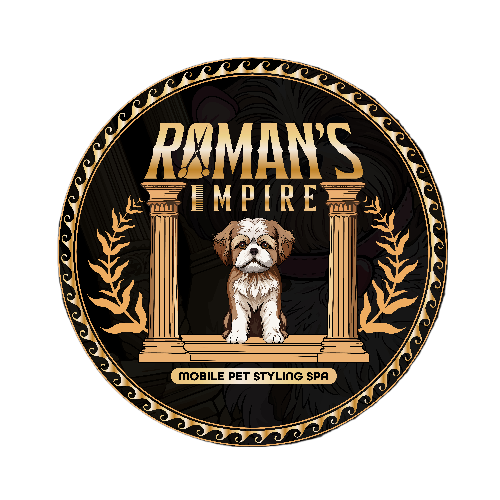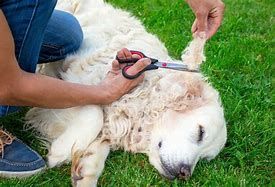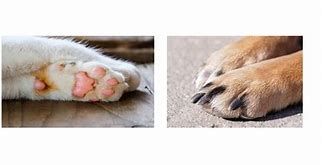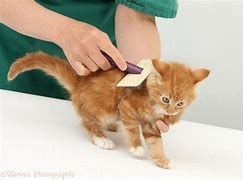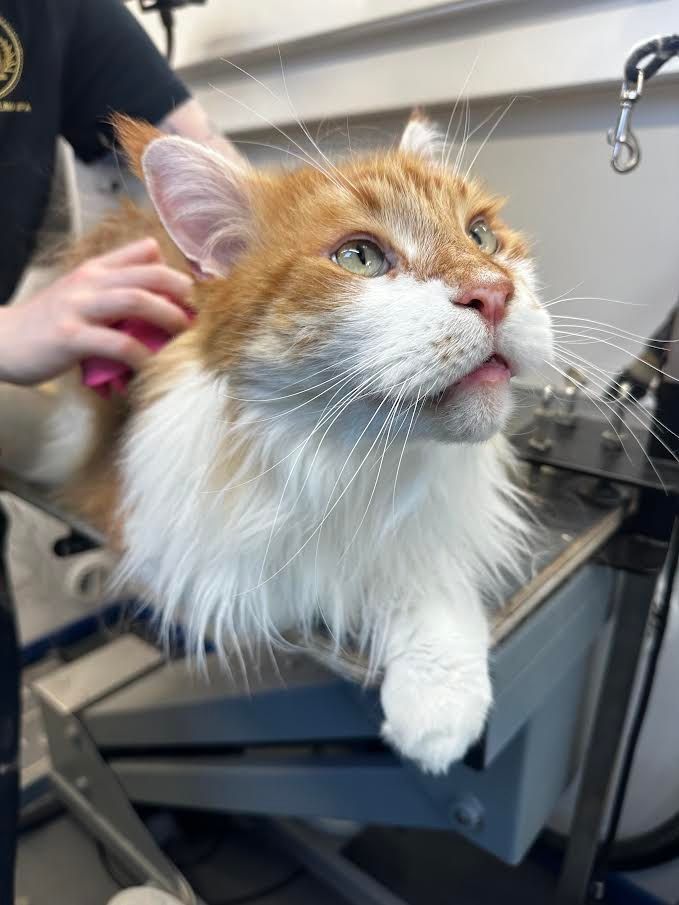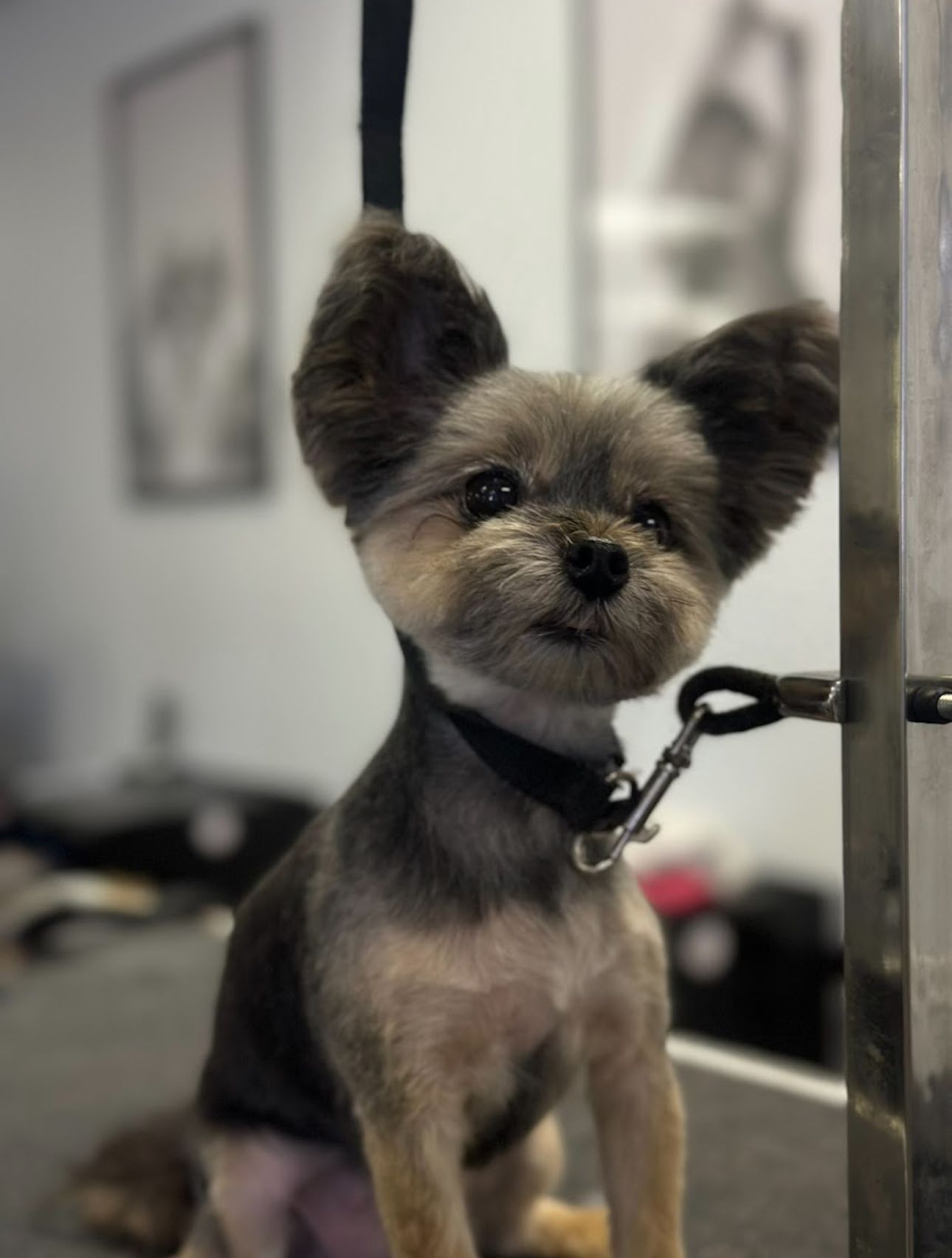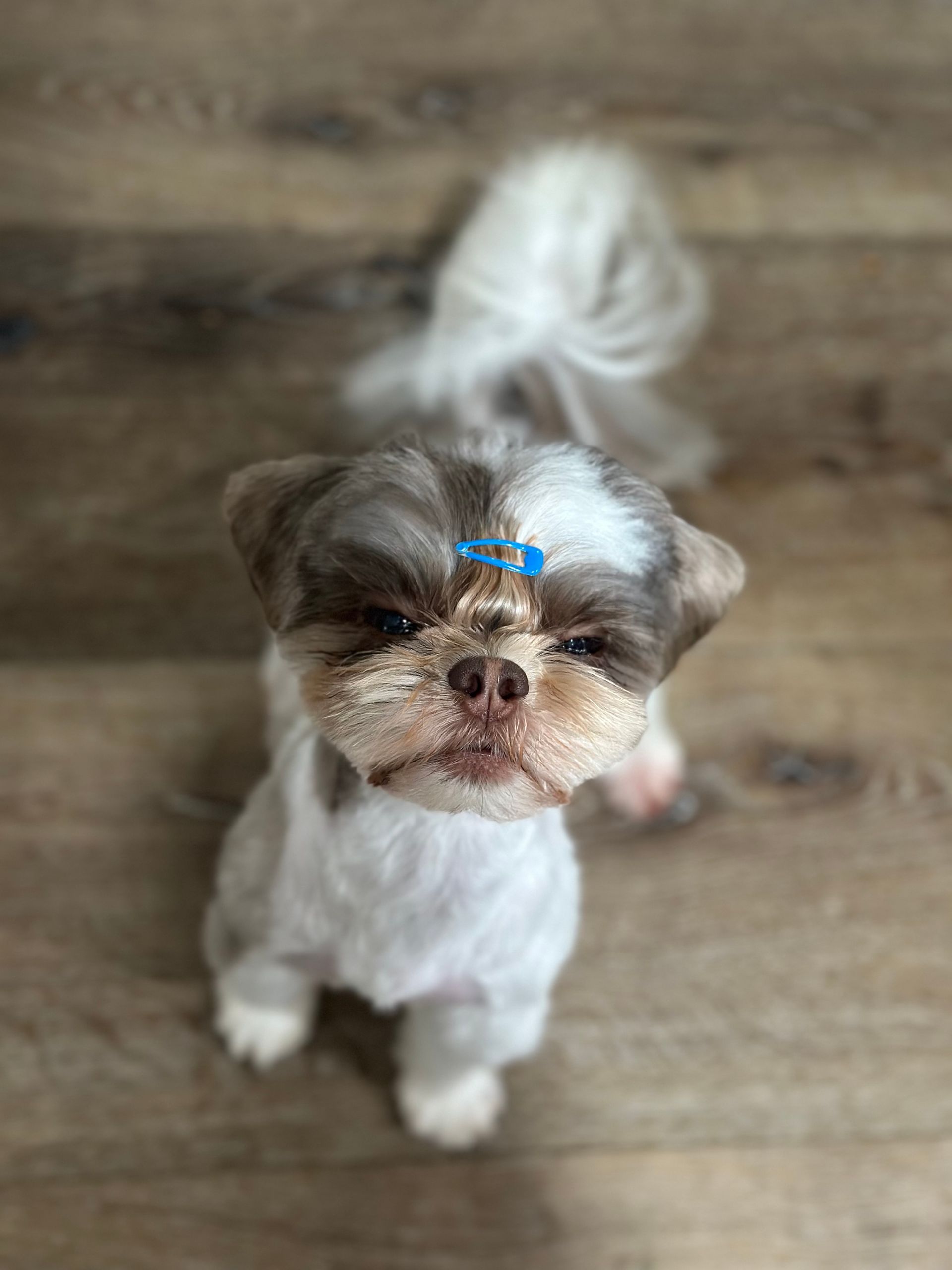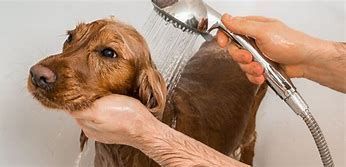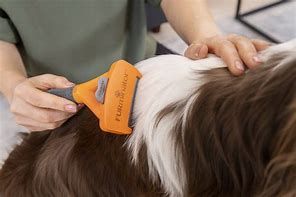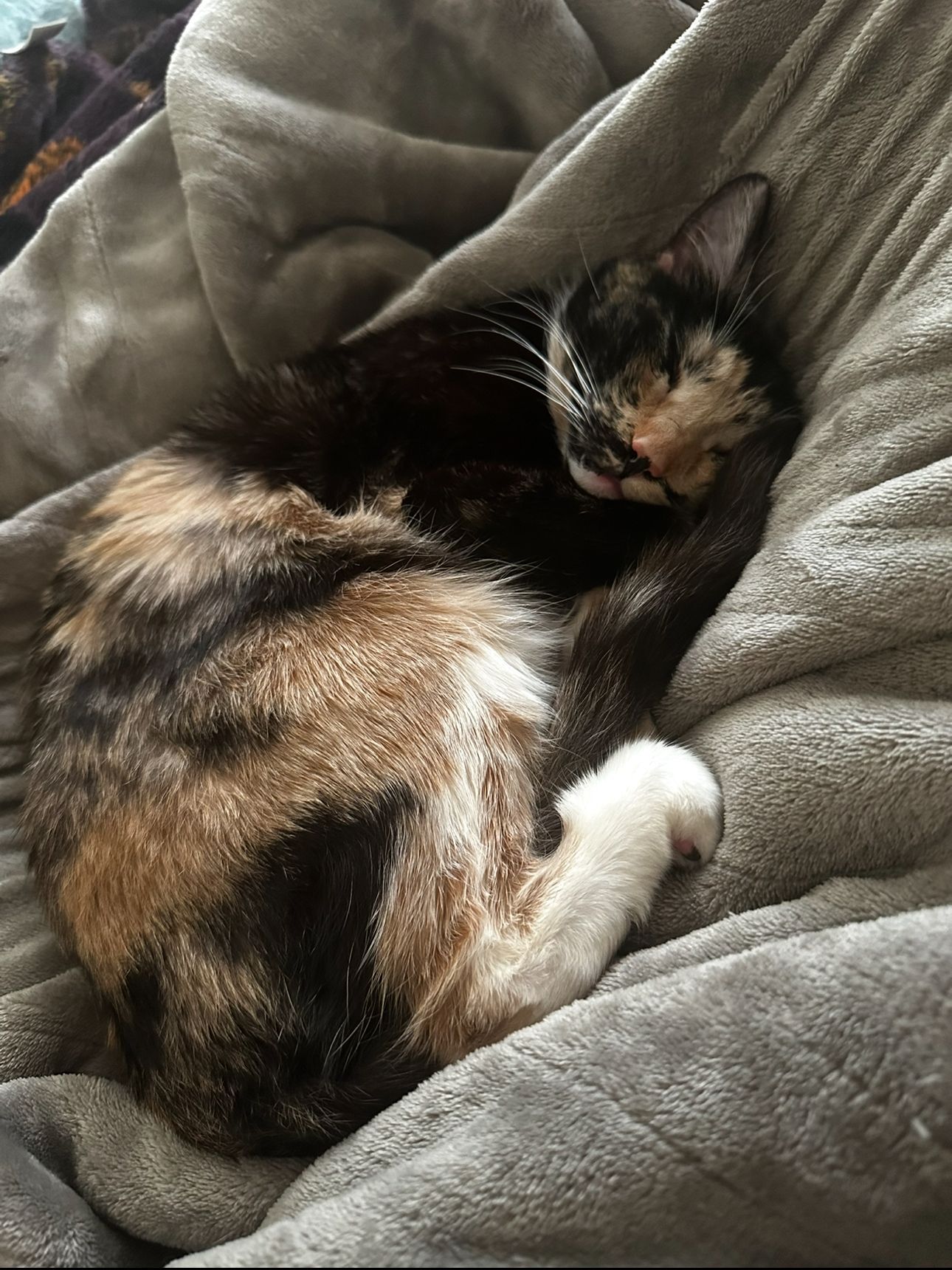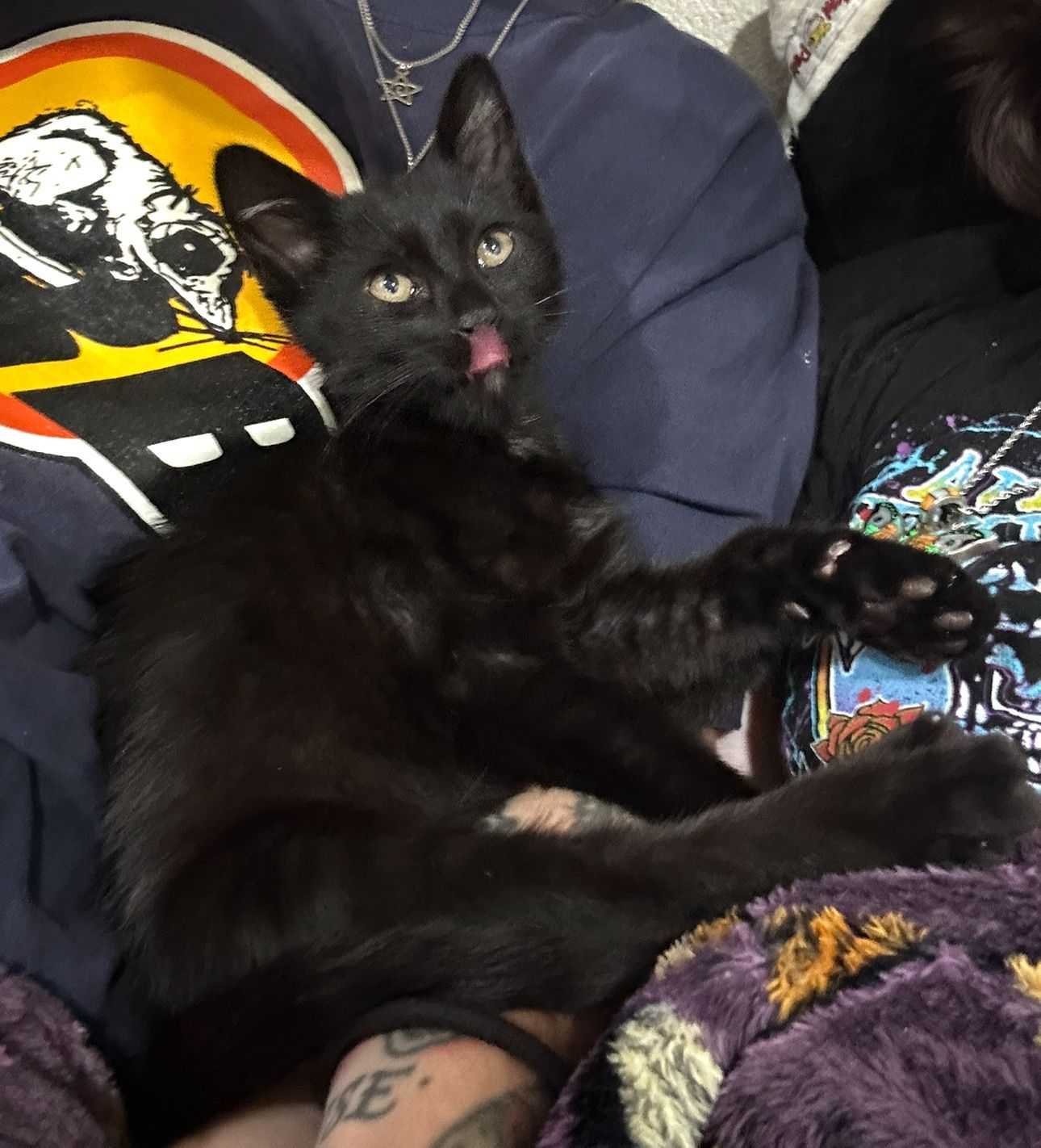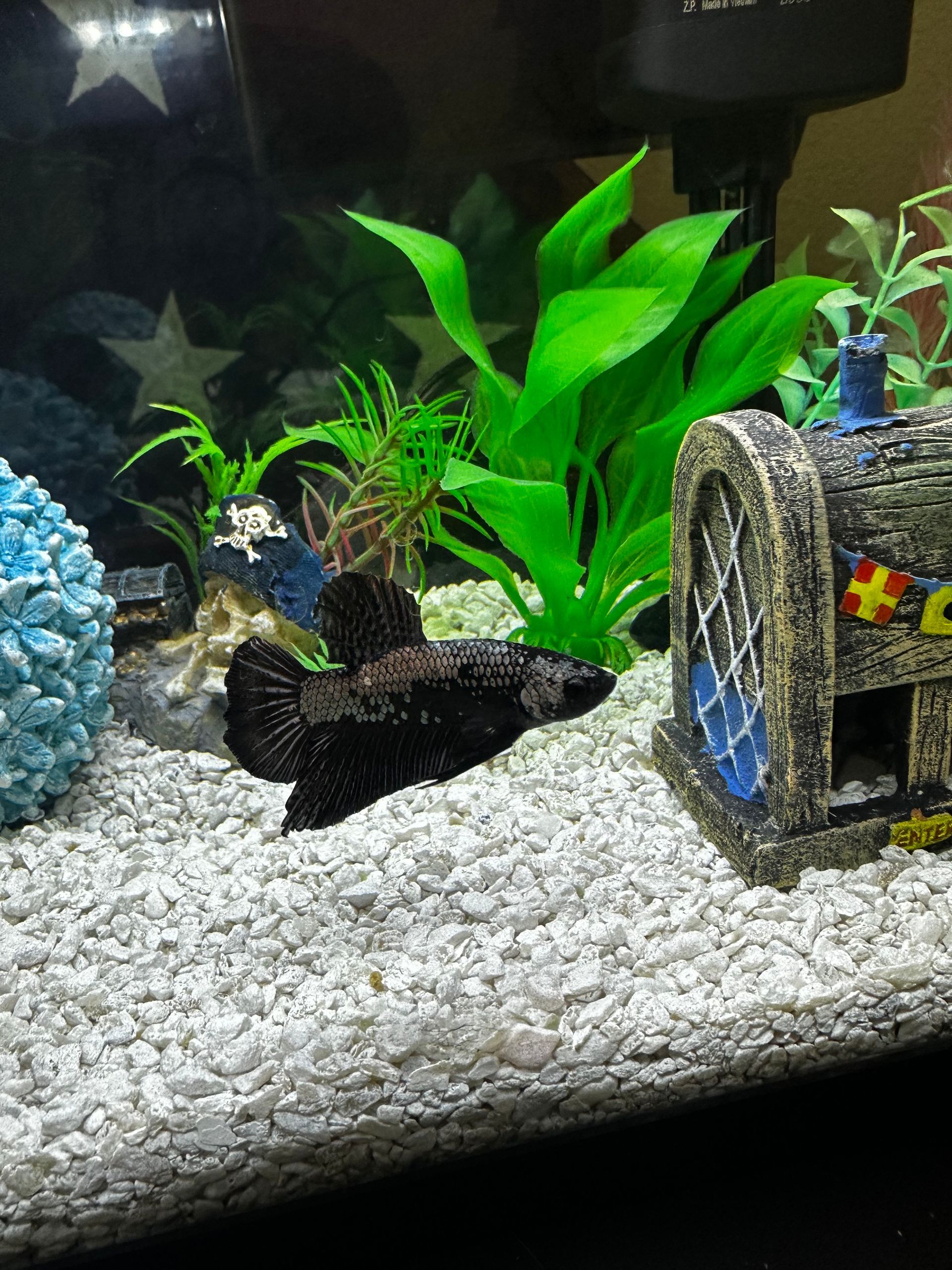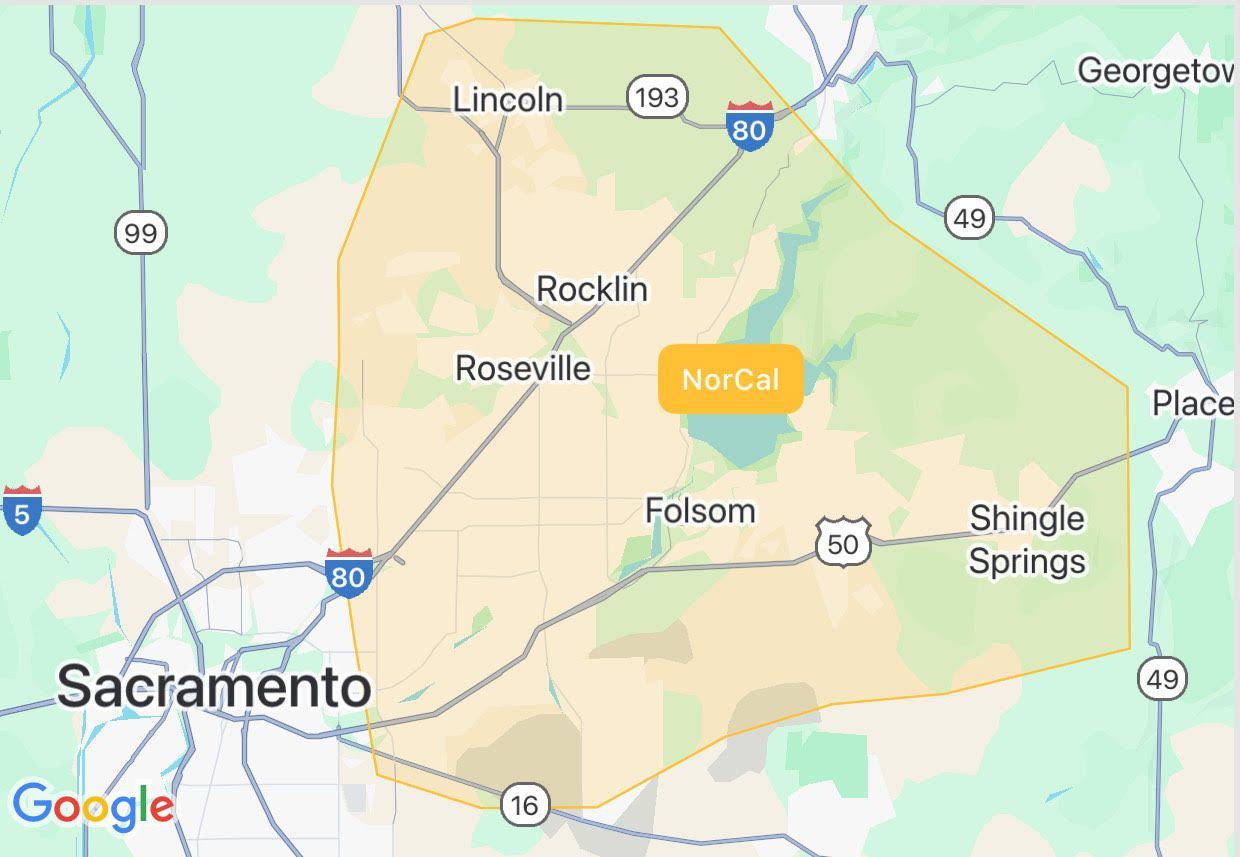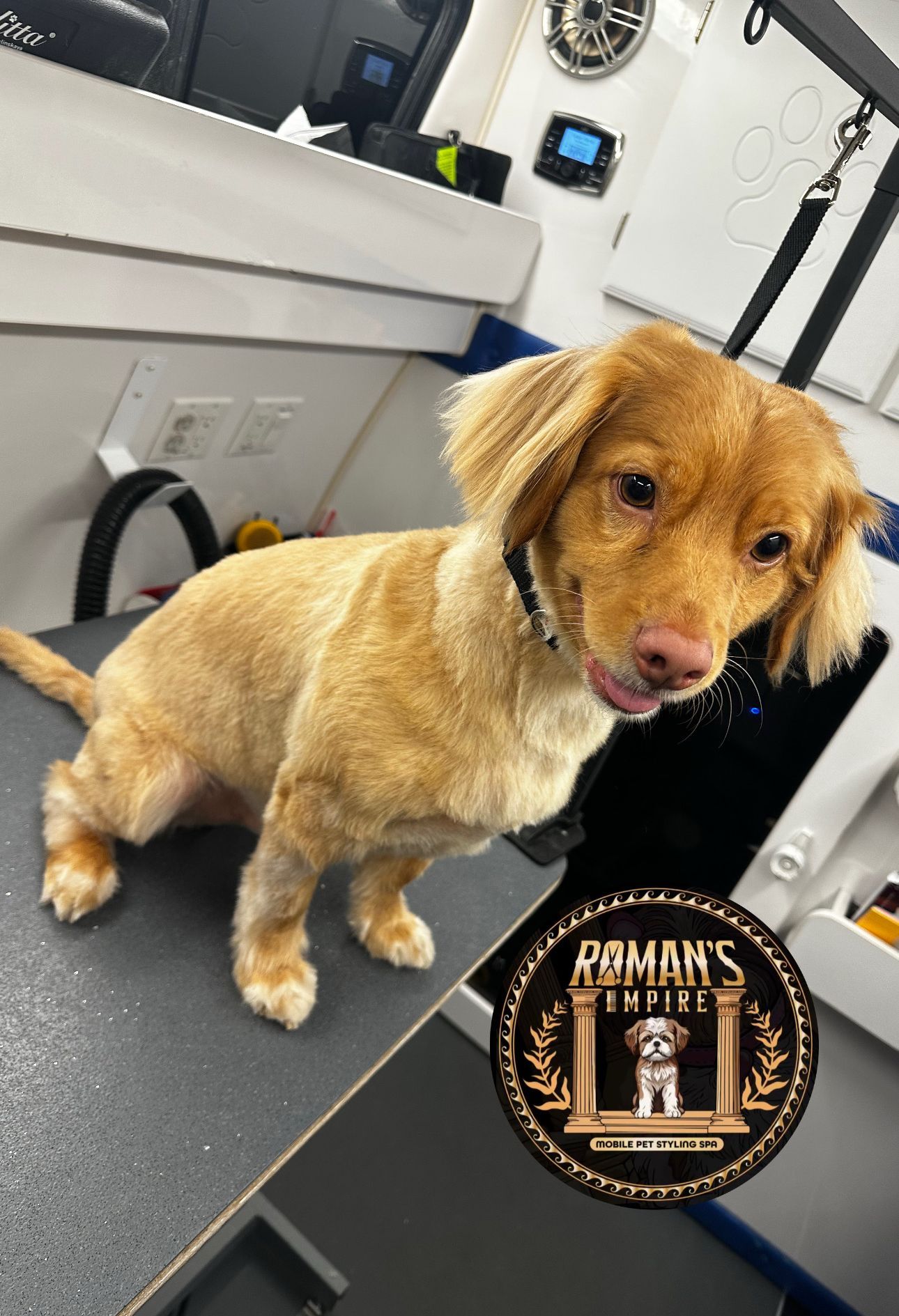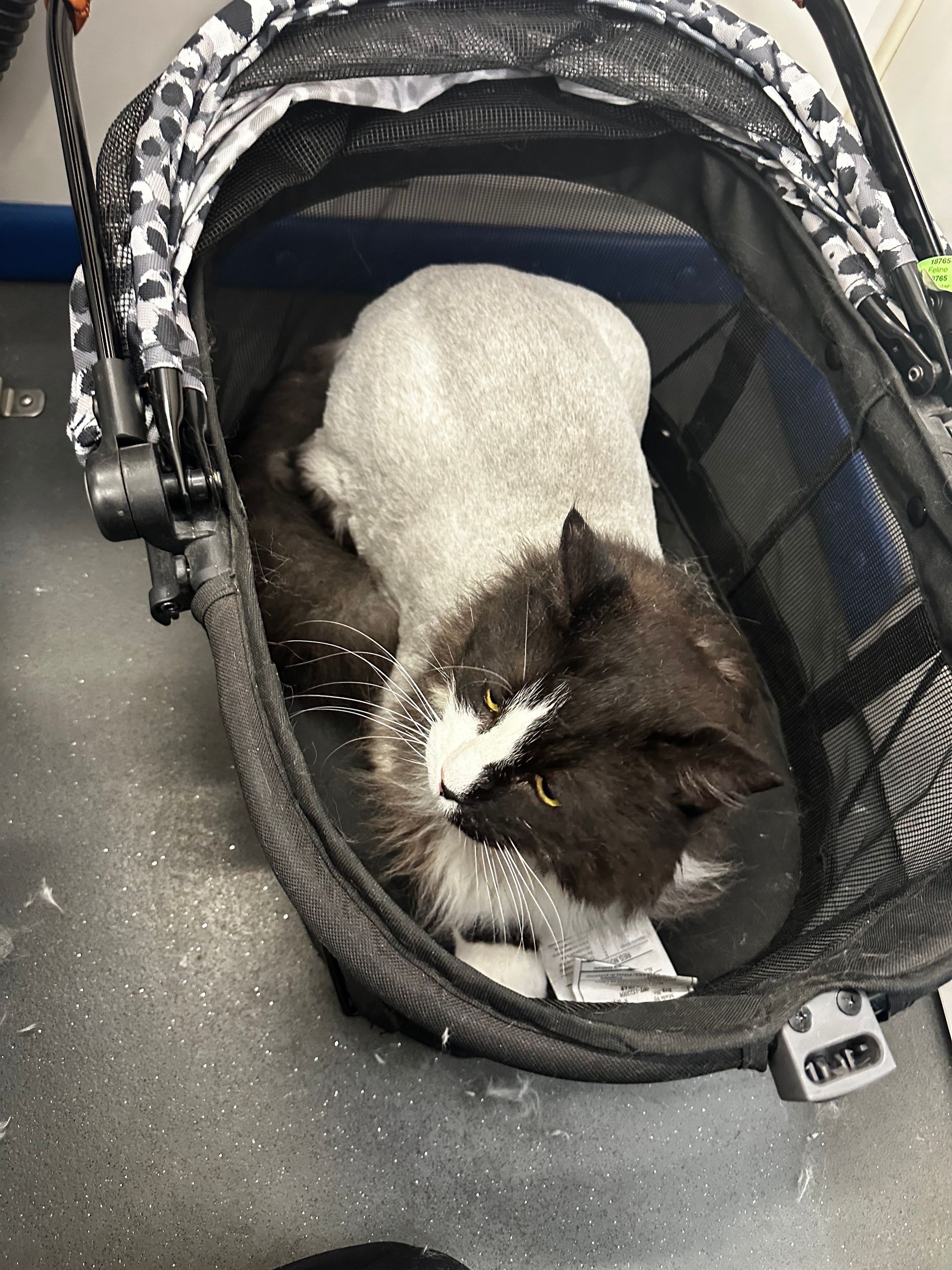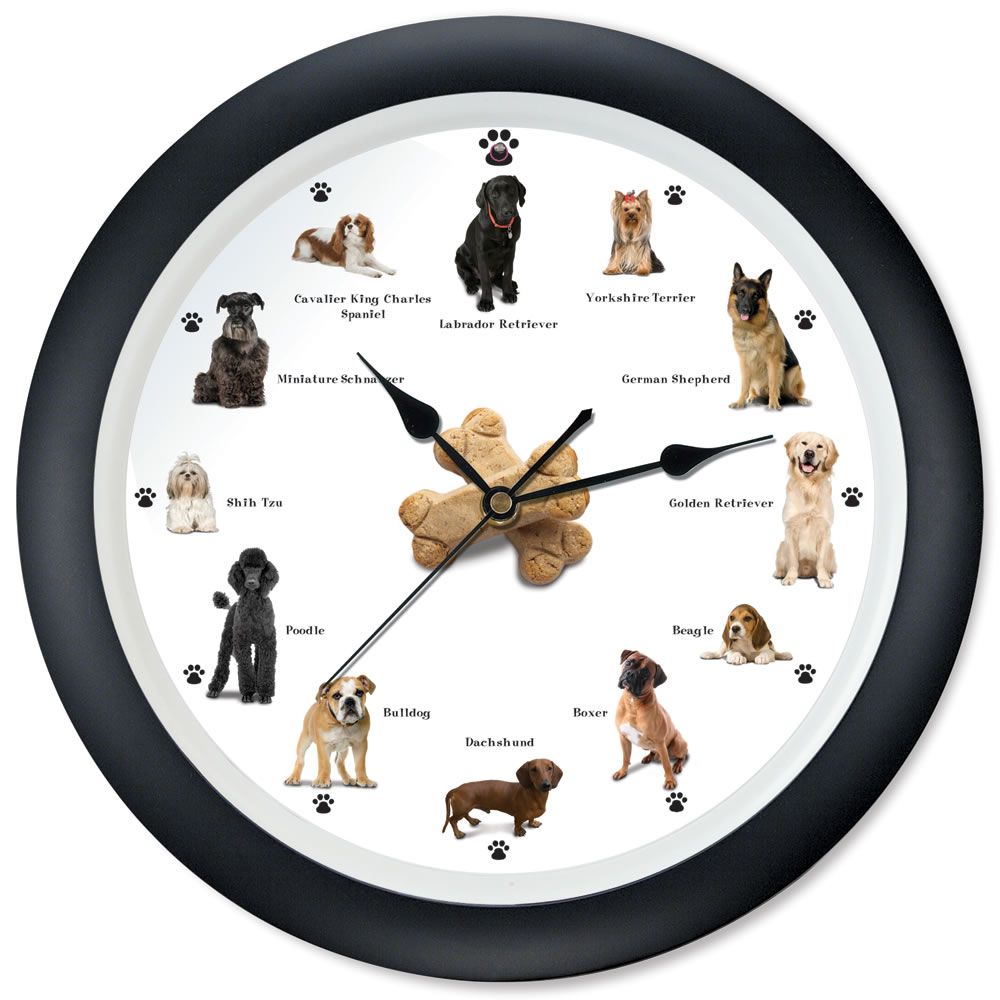Grooming Puppies: Building Trust, Confidence, and a Lifetime of Positive Care
If you're reading this, you likely just welcomed a new family member into your home--congratulations!!! Let's set your pup up for success together.
When it comes to raising a well-adjusted, confident dog, early grooming plays a vital role—yet it’s often misunderstood or overlooked.
Many new pet parents assume that grooming isn’t necessary until their puppy is “dirty” or needs a haircut. But grooming isn’t just about appearance—it’s about exposure, trust-building, and long-term health and comfort.
At Roman’s Empire, we specialize in grooming experiences that support behavioral development and emotional safety, especially during the critical puppy stage.
Have a Doodle Puppy?
At home maintenance and frequent grooming as young as possible is even more imperative to set your dog up for long term success. Explore the lies and myths your breeder told you and come right back here.
Breeder Desensitization Is a Start—Not a Substitute
Some breeders--those who are reputable--do a wonderful job introducing puppies to basic grooming tools or handling before they go home—and that early desensitization is valuable. However, it's important to understand that breeder grooming exposure is not the same as a full, professional grooming session, and it doesn't carry over indefinitely.
Here’s why:
- Limited Scope: Breeder exposure often involves brushing, nail trims, or standing on a table, and even clipper-work—helpful, yes, but not remotely equivalent to the full sounds, sensations, and duration of a real groom.
- Short Window of Learning: Puppies are in a rapid neurological development stage, and like any new skill, grooming tolerance fades without practice. A puppy that was “fine” at 8 weeks won’t remember much by 14–16 weeks if there’s no follow-up.
- Different Environment: Being groomed by a familiar breeder in a quiet home isn’t the same as being handled by a stranger in a grooming van with dryers, clippers, and restraints. The entire sensory experience changes—and needs reintroduction.
- False Confidence: Owners often assume a puppy is already “used to” grooming based on breeder exposure, and wait too long to schedule their first appointment—missing the critical window to reinforce and build on those early lessons.
The bottom line? Breeder desensitization is a bonus, not a foundation. If not maintained through consistent professional grooming starting soon after rehoming, that early work fades fast—and the puppy starts from scratch, or worse, resists the process entirely.
To ensure long-term grooming success, your puppy needs frequent, professional sessions during their formative months—not just a few brushes and baths as a newborn.
Why At-Home Grooming Can’t Replace Professional Care
While brushing and bathing your puppy at home is helpful for maintenance and desensitization, it doesn’t replicate the intensity or structure of a professional groom.
At-home grooms often skip vital steps (like proper drying or paw/nail care), restraint training, and more--and puppies miss out on learning how to tolerate—and even enjoy—being groomed by someone other than their owner, let alone a professional.
Professional grooming isn’t just about aesthetics; it’s cooperative care and maintaining good health. It teaches your puppy how to regulate their behavior under gentle restraint, how to accept new stimuli, and how to stay calm through unfamiliar routines. These are essential skills that improve quality of life, reduce stress at the vet, and prevent behavioral problems later on.
For more and this, explore why at-home grooming doesn't compare to professional grooming here.
What Professional Grooming Really Involves
Professional grooming is far more than just brushing and bathing. It includes:
- A full-body check for skin issues, parasites, or irritations
- Proper coat prep (detangling, de-shedding, pre-bath brushing)
- High-quality shampoo and conditioner matched to coat type
- Fluff drying and coat stretch techniques
- Nail trimming and filing
- Ear cleaning
- Sanitary trimming and paw pad cleanup
- Styling with safety and comfort in mind
Each step involves close handling, new sensations, and unfamiliar equipment.
Building a puppy’s confidence around these experiences takes consistency—and that’s where at-home grooming falls short.
For a more detailed view of professional grooming, view our post here.
The Importance of Frequency and Consistency
Puppies need grooming exposure early—and often. A common mistake is waiting months between appointments, which forces the puppy to “start over” emotionally each time. Instead, we recommend:
- First exposure: As early as 8-10 weeks (after first vaccinations), focused on short, positive experiences
- Frequency: Every 4–6 weeks during the first year, to reinforce familiarity and reduce fear
- Maintenance: Brushing at home between grooms and handling paws, ears, and muzzle regularly
This consistency sets the foundation for a lifetime of stress-free grooming and cooperative care.
If you're worried about if frequent grooming strips natural oils, we suggest exploring our post debunking this perspective here.
See why staying on a frequent grooming schedule is essential.
What Happens If You Wait Too Long?
Waiting too long to introduce your puppy to professional grooming can lead to significant challenges down the line—from fear-based aggression to extreme anxiety and stress. It can also mean one of your puppy's first grooming experiences is an intense, overwhelming and painful dematting session. See why matting removal is not something you can opt-out of.
Read our related post:
What Happens When You Delay Professional Grooming
Why a Full Haircut at the First Groom Is a Mistake
One of the biggest misconceptions among new dog owners is that a puppy’s first grooming appointment should include a full haircut. While that may seem logical if the coat looks long or messy, in reality, it's one of the most damaging things you can do to a puppy’s grooming journey.
It may take several appointments for your puppy to become desensitized to professional grooming to safely--and with minimal stress--introduce clippers and shears.
A full haircut requires a puppy to tolerate prolonged handling, multiple tools, loud sounds, vibrations, sharp instruments, and standing still for extended periods—all while still learning the basics of being touched, handled, restrained, and groomed. It's a huge ask, both physically and emotionally.
Forcing a full groom before a puppy is emotionally ready:
- Creates fear and negative associations with grooming tools and handling
- Increases stress hormones, which can lead to anxiety at future appointments
- Raises the risk of injury due to wiggling, panicking, or sudden movements during sensitive tasks like trimming around the face, feet, or sanitary areas
- Can cause grooming regression—dogs that seemed okay may become fearful, reactive, or even aggressive later on
Instead of diving into a full haircut, the first few appointments should focus on building tolerance and trust—introducing tools and touch gradually, ending on a positive note, and reinforcing the idea that grooming is safe.
At Roman’s Empire, we always prioritize your puppy’s emotional well-being over aesthetics. We’d rather send your puppy home a little fluffy but happy than force a transformation that leads to long-term fear or injury.
Every Puppy Is Different
There is no one-size-fits-all timeline for when a puppy is “ready” for their first full groom. Some pups adjust quickly to the tools, noises, and handling involved, while others need time and patience. That’s why your puppy’s first few grooming appointments should focus less on perfection and more on positive exposure and progress.
Rushing a puppy into a full haircut before they’ve built trust with the process can create lasting fear and resistance. Our approach is gentle and adaptive—we go at your puppy’s pace while gradually introducing them to each part of the grooming routine.
Post-Rehoming Puppy Grooming Checklist
Build on Breeder Desensitization, Promote Cooperative Care, and Set the Foundation for a Lifetime of Stress-Free Grooming
1. Schedule the First Professional Groom Early
- Book an appointment as soon as your puppy has received first vaccines—ideally between 8-10 weeks
- First sessions are short and focused on gentle exposure, not aesthetics
2. Keep a Consistent Grooming Routine
- Rebook every 4–6 weeks during the first year to build familiarity and prevent fear-based regression
- Frequent sessions ensure your puppy learns to trust the process, tools, and handling
3. Begin At-Home Maintenance Immediately
Start daily or every-other-day routines at home to reinforce cooperative care and build tolerance:
- Brushing: Light brushing even if the coat doesn’t tangle yet—focus on making it a positive experience
- Paw handling: Gently touch and hold each paw to prepare for nail trims
- Ear handling: Lift and inspect ears calmly, associating it with treats or praise
- Face and muzzle handling: Brief sessions holding the chin or wiping the face to prepare for trimming and cleaning
- Use a non-slip mat or raised surface to simulate grooming table time
- Keep sessions short, fun, and rewarding—stop before your puppy loses patience
Learn how to maintain your dog in between grooming appointments here.
4. Understand the Goal: Cooperative Care, Not Compliance
Everything you do—at home and with your groomer—should center around cooperative care, where the puppy learns to participate willingly rather than being forced.
This builds confidence, reduces stress, and results in fewer injuries, better behavior, and a happier dog long-term.
Read more on cooperative care here.
5. Don’t Wait for a “Need” to Book the First Haircut
Waiting until the puppy looks scruffy or matted before the first real groom is a mistake. After one or two exposure grooms, most puppies are ready for light trimming or a full haircut (if their breed or coat type requires it). Delaying increases the risk of trauma and sets the stage for lifelong grooming aversions.
6. Choose a Groomer Who Works With Puppies—Not Against Them
- Look for professionals trained in puppy handling, fear-free methods, and behavior cues
- Communicate openly about your puppy’s personality and any previous exposure
- Stay consistent with one groomer when possible to build a secure, trusting relationship
Cooperative Care Is the Goal
At Roman’s Empire, we don’t force compliance—we nurture cooperation. Using fear-free handling, positive reinforcement, and clear communication, we help puppies learn that grooming isn’t something to fear. It’s something they can get through calmly—and even enjoy.
Your Groomer Is Your Dog’s First Line of Defense
Choosing a groomer isn’t just about who gives the best haircut—it’s about building a long-term partnership in your dog’s overall well-being.
When you stay consistent with the same professional groomer, they get to know your dog on a deeper level: how they move, how they react, what’s normal, and what isn’t. This relationship creates a critical baseline of reference—and without it, subtle health or behavioral changes often go unnoticed until they escalate.
Groomers are often the first to detect:
- Skin infections, lumps, or rashes hidden beneath the coat
- Ear infections or dental issues that may not yet show symptoms
- Limping, joint stiffness, or signs of pain during handling
- Stress triggers or behavioral shifts that signal deeper issues
But this only happens when there’s a relationship built on time, consistency, and trust. When a dog sees a new groomer each time—or only comes in sporadically—there’s no frame of reference. We can’t tell what’s “new” or “normal,” which means red flags are easy to miss.
Professional grooming is more than a bath and a brush—it’s a physical, emotional, and behavioral wellness check. As discussed in our post “Correlation Isn’t Causation: Why Grooming Can Reveal or Exacerbate Preexisting Conditions”, the grooming process often agitates or exposes hidden issues, which can be life-saving when caught early. Explore why shaking isn't a sign of abuse or a bad person here.
For additional insight, learn how to spot unethical groomers.
Bottom line? Find a groomer you trust. Stay consistent. Communicate openly. Your dog will benefit more than you realize—from health to confidence to comfort.
If you really want to understand the ins and outs of professional grooming, discover how cheap grooming isn't a bargain.
Why Sticking With One Groomer Matters—Especially for Puppies
Puppies are in one of the most sensitive and impressionable stages of their lives. Just like young children, they learn best through gentle repetition, clear expectations, and consistent, safe relationships. Introducing them to grooming should be a carefully guided process—one that builds trust, not confusion.
When a puppy sees different groomers at every appointment, they aren’t just adjusting to a new face. They’re experiencing:
- A new tone of voice
- Different handling techniques
- Varying grooming philosophies (e.g., pace, pressure, restraint use)
- Different energy, speed, expectations, and tolerance thresholds
And here’s the hard truth: not all groomers are trained the same. Grooming is an unregulated industry, and there's a wide range of knowledge and skill when it comes to handling puppies, cooperative care, reading body language, and managing stress. Some groomers may unintentionally push too far, miss subtle signs of distress, or expect more than a puppy is developmentally ready to give.
This inconsistency can undo progress, create fear, and damage your dog’s long-term relationship with grooming.
But when you stick with one groomer—especially one trained in cooperative care and puppy development—your puppy:
- Learns the grooming process through safe, incremental exposure
- Associates grooming with predictability and comfort
- Builds trust with someone who understands their specific personality, triggers, and needs
- Gains confidence over time, not fear
Consistency isn’t just a preference—it’s part of their emotional and behavioral development. It sets the tone for how they will approach grooming for the rest of their life.
For more on this, see why sticking to one groomer is essential for trust and comfort.
First time puppy parent? Learn why grooming prices vary and why that matters.
Final Thoughts:
Starting early, going slow, and staying consistent are the keys to grooming success. If you’re raising a puppy in Thousand Oaks, Camarillo, Westlake Village, Agoura Hills, or the surrounding areas, Roman’s Empire is here to guide you through every step of the journey—from first brush to a confident, regal adult.
